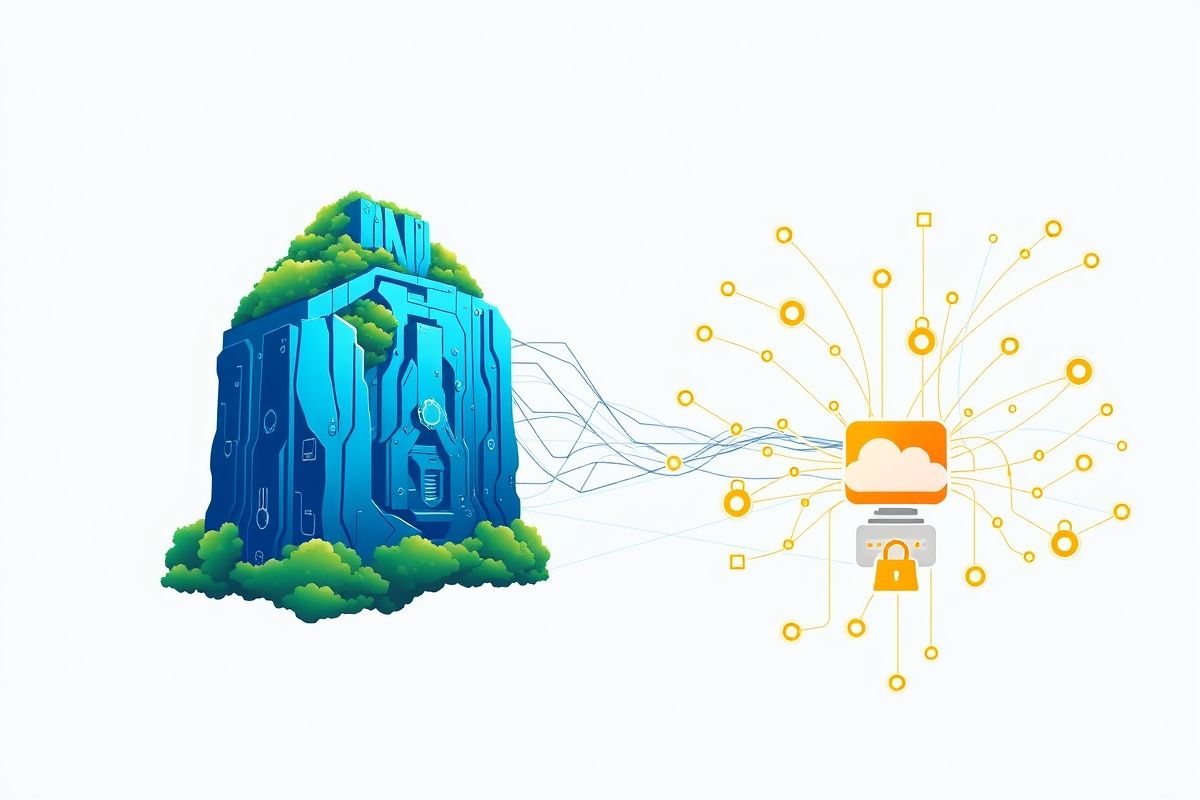Serverless Architectures: Deconstructing Netflix's Microservices Migration & Lessons Learned
The shift to serverless computing has become a defining characteristic of modern cloud-native application development. While many organizations tout their serverless deployments, few have undertaken a transformation as monumental as Netflix's. Their journey offers invaluable lessons for anyone contemplating a similar migration, particularly those managing complex microservice architectures. This deep dive delves into the specifics of Netflix's transition, highlighting both triumphs and challenges.
The Pre-Serverless Landscape: A Monolithic Colossus
Before their serverless adoption, Netflix relied on a large, complex, and often unwieldy monolithic architecture. Maintaining this system presented significant scaling challenges, particularly during peak demand periods. Deployment cycles were lengthy, and fault tolerance was a constant concern. This legacy system, while functional, lacked the agility and scalability needed to meet the ever-growing demands of their global user base.
The Decision to Embrace Serverless: A Strategic Pivot
The decision to move towards serverless wasn't a hasty one. It was a strategic move born out of the need for increased scalability, improved resilience, and reduced operational overhead. Netflix recognized the potential of serverless to decouple their microservices, improve fault isolation, and dramatically simplify deployment processes. This section will analyze the key drivers behind their decision, providing a framework for assessing the suitability of serverless for your own applications.
Architectural Design and Implementation Details: A Deep Dive
Netflix's migration wasn't a simple lift-and-shift operation. They implemented a multifaceted approach leveraging various serverless technologies, including AWS Lambda, Amazon SQS, and DynamoDB. This section will meticulously examine their architectural choices, including:
- Event-Driven Architecture: How Netflix leveraged event-driven principles to decouple microservices and ensure loose coupling.
- Asynchronous Processing: The role of message queues and asynchronous communication in enhancing scalability and resilience.
- Microservices Orchestration: How Netflix managed the complex choreography of their numerous microservices.
- Data Management: The use of NoSQL databases like DynamoDB to handle high-volume data streams.
Code examples (Illustrative - replace with actual Netflix-relevant examples if available):
#Illustrative example of Lambda function triggered by SQS message
import json
import boto3
sqs = boto3.client('sqs')
def lambda_handler(event, context):
for record in event['Records']:
payload = json.loads(record['body'])
#Process the payload
print(f"Processing message: {payload}")
return {
'statusCode': 200,
'body': json.dumps('Messages processed successfully!')
}Challenges and Pitfalls: Lessons Learned the Hard Way
Netflix's journey wasn't without its challenges. They encountered several hurdles, including:
- Cold Starts: Managing the performance impact of cold starts in Lambda functions.
- Monitoring and Observability: The complexities of monitoring a distributed serverless architecture.
- Debugging and Troubleshooting: The challenges of debugging distributed, asynchronous systems.
- Security Considerations: Securing serverless functions and protecting sensitive data.
We'll analyze how Netflix addressed these challenges and the strategies they employed to mitigate these risks.
Cost Optimization and Resource Management: A Fine Balance
Serverless isn't always a cost-free solution. Netflix had to carefully manage their resource consumption to ensure cost-effectiveness. This section will cover their strategies for optimizing costs and managing resource utilization, including techniques for minimizing cold starts and optimizing function execution time.
The Future of Serverless at Netflix and Beyond: Predictions and Trends
Netflix's serverless journey is ongoing. This section will explore future trends in serverless computing and speculate on how Netflix might further leverage serverless technologies in the years to come. We'll discuss emerging technologies and their potential impact on the serverless landscape.
Actionable Takeaways and Next Steps: Implementing Your Own Serverless Strategy
This section will summarize the key takeaways from Netflix's experience and provide practical advice for organizations considering their own serverless migrations. We'll outline a step-by-step process for planning and executing a successful serverless transformation, emphasizing the importance of careful planning, thorough testing, and continuous monitoring.
Resource Recommendations: Further Reading and Exploration
This section will provide links to relevant resources, including articles, white papers, and tools that can aid in your serverless journey.
